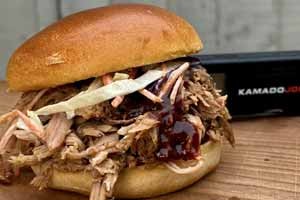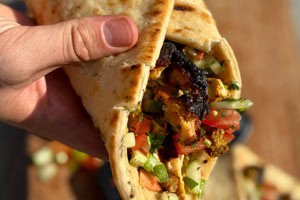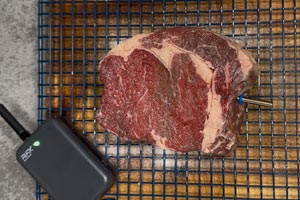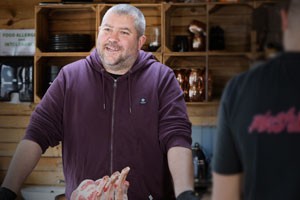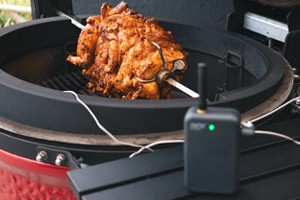Easy, tender BBQ pulled pork, loaded into buns with coleslaw and BBQ sauce.
A Temperature Guide to Cooking & Resting Turkey
Christmas dinner is, for many, the most important meal of the year. But cooking a whole turkey is no mean feat — it’s difficult to ensure such a large and lean meat is safely cooked and juicy all the way through. Especially when packet instructions and recipe timings commonly overestimate how long it takes for meat to reach a safe temperature, resulting in an overcooked centrepiece.
To better understand the perfect way to cook and rest a turkey to get a juicy result, we decided to conduct an experiment that would teach us three things:
- The optimal temperature to remove turkey from the oven
- How much turkey temperature continues to rise as it rests
- How long turkey stays warm after cooking
Read on to find out how we did it and what the results were.
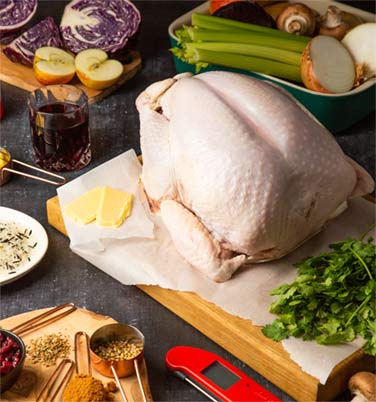
What is the cooked temperature for turkey?
Firstly, we need to know what the optimal temperature for turkey is. 74 °C is the recommended temperature where all harmful bacteria are destroyed, but it’s still nice and juicy.
It can also be useful to know that safe cooking temperatures actually work as a temperature and time combination. So if your chicken maintains an internal temperature of 70 °C for two minutes, it’s equally as safe as reaching 75 °C for 30 seconds.
These are the cooking combinations recommended by the Food Standards Agency:
- 60 °C for 45 minutes
- 65 °C for 10 minutes
- 70 °C for 2 minutes
- 75 °C for 30 seconds
- 80 °C for 6 seconds
The experiment
We cooked three whole turkeys (each weighing 4-4.5kg) using three different methods:
- Turkey 1 cooked to the time suggested on its packaging
- Turkey 2 cooked to 74 °C internal temperature
- Turkey 3 cooked to 67 °C internal temperature
All of the turkeys were cooked at an oven temperature of 180 °C/ 140 °C fan. After, we rested all of them in the same way — on a chopping board tented with foil. We monitored the temperatures of each turkey throughout the whole process to see how much the temperature increased as they rested and how long this took. Meat continues to rise in temperature once out of the oven due to carryover cooking, and we wanted to see if the different resting methods impacted this.
We also monitored the temperature of the turkeys for an hour and a half after cooking to find out how long they stayed at a safe and servable temperature. Once the turkey is out of the oven, it’s time for the sides to go in. And it can be useful for cooks to know the maximum length of time they have to do this.
The Results
Cooking time and temperature
- Turkey 1 cooked for 4 hours and 10 minutes. It measured 97 °C when removed from the oven.
- Turkey 2 reached 74 °C in 1 hour and 20 minutes, 2 hours and 45 minutes less than the time indicated on the packaging.
- Turkey 3 reached 67 °C in 1 hour and 53 minutes, 2 hours and 48 minutes less than the time indicated on the packaging.
The results showed that cooking to packet instructions can take over twice as long as cooking to temperature, resulting in a bird over 20 °C higher than recommended.
Turkey 3 took longer to reach a lower temperature than Turkey 2 because it weighed slightly more. This shows the importance of always using temperature rather than time as a guide for cooking.
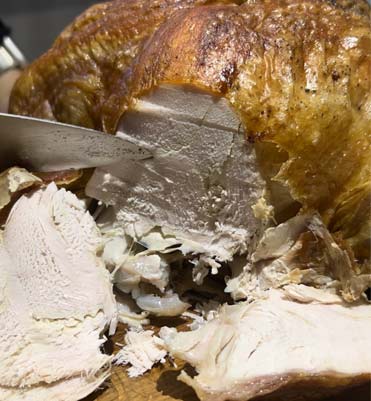
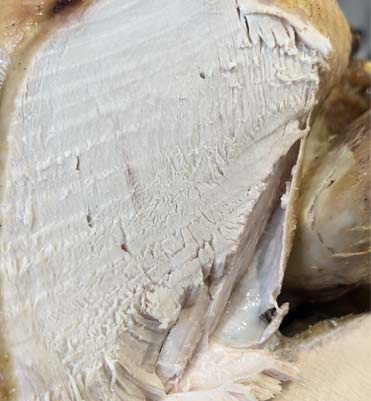
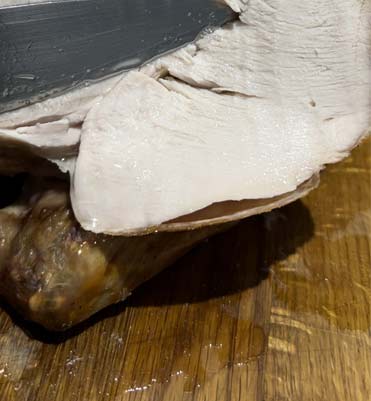
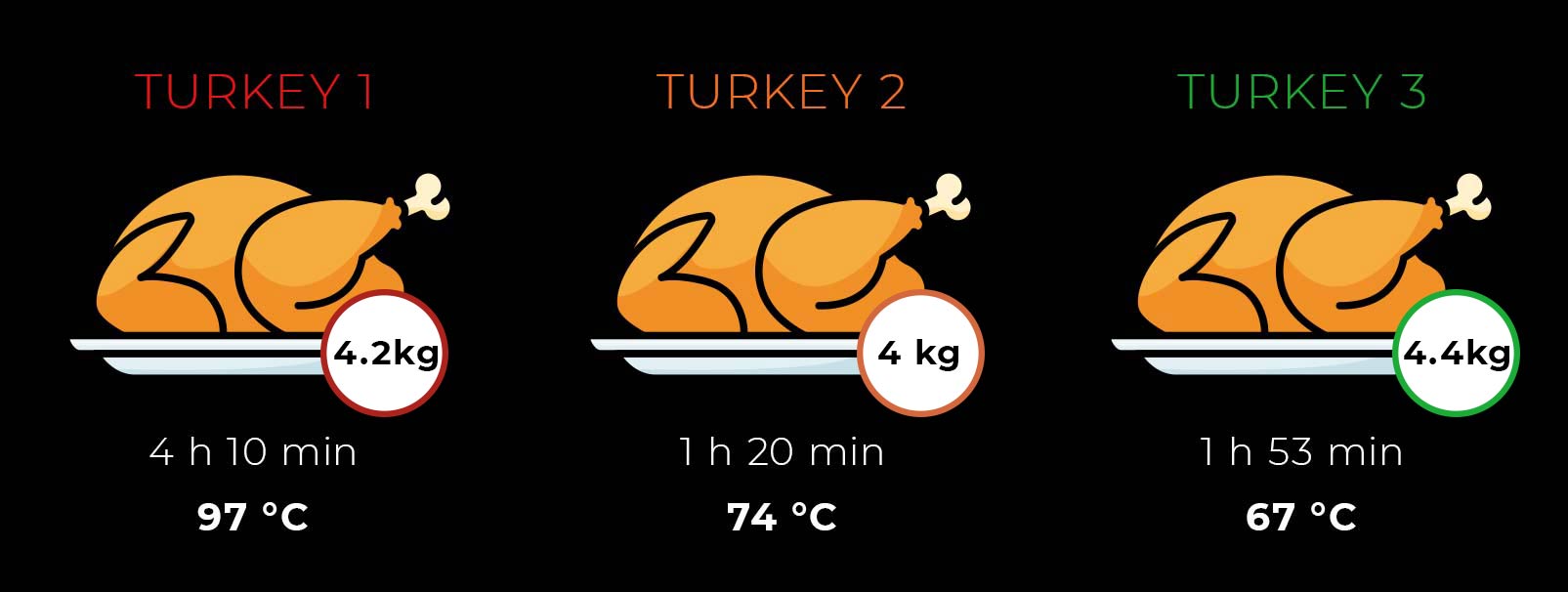
Carryover cooking
- Turkey 1 did not increase in temperature.
- Turkey 2 increased by 6 °C. After 13 minutes, it reached a peak temperature of 80 °C
- Turkey 3 increased by 8 °C. After 24 minutes, it reached a peak temperature of 75 °C.
Turkey 1 reached 97 °C 20 minutes before it was removed from the oven. We suspect that the reason it didn’t appear to be able to reach a higher temperature is because at this point, the liquid in the meat was boiling. This means the meat wasn’t cooking any further but became more dry as the liquid evaporated.
The temperature-cooked turkeys increased by 6-8 °C within 30 minutes of resting time. Therefore, we would suggest removing your turkey from the oven at around 6-8 °C before it reaches your final desired temperature.
We would also recommend leaving your turkey to rest for at least 45 minutes, as the results show that the turkey doesn’t decrease in temperature for around 30 minutes. It’s not until the turkey starts decreasing in temperature that the muscle fibres relax and the juices redistribute, producing a more tender, flavoursome and juicy result.
Final temperature after resting
- Turkey 1 measured 66 °C after 1 hour and 30 minutes.
- Turkey 2 measured 66 °C after 1 hour and 30 minutes.
- Turkey 3 measured 64 °C after 1 hour and 30 minutes.
The longer you rest your turkey, the juicer it will be. But you don’t want to leave it too long and be left with cold meat. We would recommend carving it before it reaches 60 °C to ensure it is still warm and delicious. As each turkey measured around 65 °C after 1 hour and 30 minutes, we would suggest this as an optimal resting time, which also leaves plenty of room for cooking roast potatoes and other sides.
Interestingly, despite Turkey 1 measuring over 20 °C more than the other turkeys, it reached the same temperature after the resting time. This is because the hotter things are compared with their surroundings, the faster they cool.
At the beginning of the rest, Turkey 1's temperature was rapidly dropping because there was a greater difference between the room temperature and the turkey temperature. Meanwhile, Turkeys 2 and 3 were increasing in temperature due to carryover cooking, which led to all three turkeys reaching a similar temperature after 1 hour and 30 minutes.
It’s important to note that resting time is influenced by elements such as the size of the bird, the room temperature and the resting method. Our room temperature was around 20 °C, and we tented our turkeys with foil. If your room is colder or you choose not to use foil, it’s likely to cool more quickly.
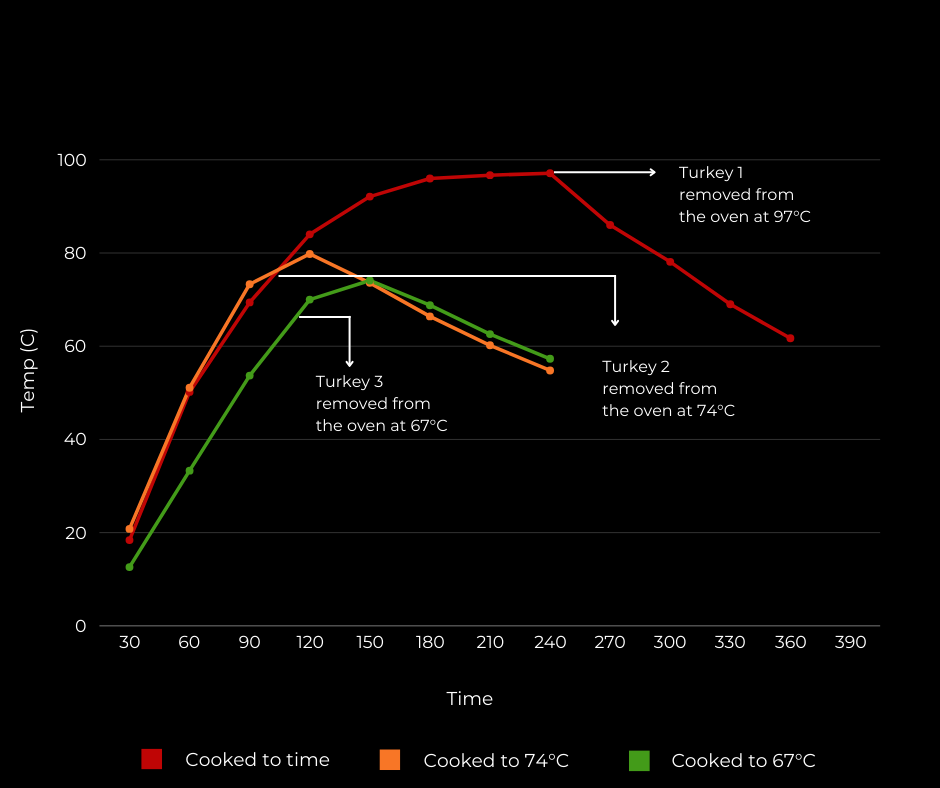
The takeaway
Cooking your turkey to 67 °C will enable it to reach a safe cooked temperature of 74 °C as it rests whilst also producing the most juicy and delicious result.
Cooking your turkey to the time suggested on the packaging could lead to it being in the oven for twice as long as necessary, whilst also causing the meat to be overcooked and dry.
The time it takes for a turkey to reach a safe temperature is highly variable — it depends on the accuracy of your oven temperature, the size of the bird, and many more factors. The easiest way to know when it’s safe to remove is to use a leave-in meat thermometer that will alert you once it reaches temperature.
Always probe your turkey in a few different places with an accurate meat thermometer, like the Thermapen, to ensure it is thoroughly cooked all the way through. Aim to check the thickest parts of the meat, usually in the centre of the breast, and avoid bones and gristle for an accurate result.
Turkey should be rested for at least 45 minutes to allow the meat to begin decreasing in temperature and for the juices to begin being reabsorbed into the meat. If tenting your bird with foil and resting in a relatively warm room, the meat can be left for around an hour and a half before carving. But the best way to know when your meat has finished resting is to test the temperature — aim for around 60-65 °C for a warm, juicy and delicious turkey.





